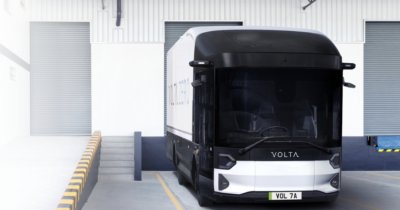The proposal also aims to encourage an increasing share of zero-emission vehicles in the EU-wide heavy-duty vehicle fleet, while ensuring that innovation in the sector and its competitiveness are preserved and enhanced.
The general approach will serve as a mandate for negotiations with the European Parliament on the final shape of the legislation.
Teresa Ribera Rodríguez, Spanish acting third vice-president of the government and minister for the ecological transition and the demographic challenge, stated that "with today’s agreement we have reaffirmed our commitment to reach our ambitious climate targets. Lorries, buses and coaches are an important part of road transportation, affecting the daily lives of millions of citizens."
"Citizens deserve to live in a greener and healthier environment, and we are now a step closer towards this objective. At the same time, we are ensuring the competitiveness of the industry, by clarifying the roadmap for new investments", she added.
The Council’s text strikes a balance between keeping the Commission proposal's main ambition to reduce the climate impact of the heavy-duty vehicle sector and allowing member states some flexibility in the implementation of the amended regulation, while strengthening innovation and reinforcing the EU’s competitiveness in the sector.
The proposal expands the scope of the regulation to make almost all new heavy-duty vehicles with certified CO2 emissions – including smaller trucks, urban buses, coaches and trailers – subject to emission reduction targets.
An exemption from the CO2 reduction targets set in the regulation will apply to small-volume manufacturers and to vehicles used for mining, forestry and agriculture; to vehicles for use by the armed forces and fire services; to vehicles for use in civil protection, public order and medical care; and to vocational vehicles such as garbage trucks.
Member states amended the definition of 'zero-emission heavy-duty vehicle' by further lowering the proposed threshold, which still covers hydrogen-fueled vehicles. Furthermore, member states added a sub-group of vehicles to include extra heavy combination (EHC) lorries in order to take better account of their characteristics, including with regard to their energy efficiency.
In line with the EU’s climate objectives for 2030 and beyond, the Council maintained the targets set by the Commission. Besides the 2025 CO2 emissions reduction target of 15% which was already provided for, the new rules introduce new targets:
- 45% emissions reduction from 2030 (increased from 30%)
- 65% emissions reduction from 2035
- 90% emissions reduction from 2040
The proposed amendment introduces a 100% zero-emission target for urban buses by 2035, while setting an intermediate target of 85% for this category by 2030. The Council agreed to exempt inter-urban buses from this target.
In addition, the Council added a series of provisions to make the review clause more comprehensive, such as considering national investments already made and possible constraints due to specific territorial morphology or weather conditions in member states. Member states also clarified the provisions on public procurement procedures for zero-emission urban buses, in particular on the assessment criteria related to security of supply, to ensure legal soundness.
The effectiveness and impact of the amended regulation on the abovementioned targets will be reviewed by the Commission in 2027, one year earlier than originally proposed by the Commission. One of the issues the Commission will have to report on in its review is progress in the deployment of public and private recharging and refueling infrastructure for alternative fuels for vehicles covered by this regulation.
In its review, the Commission will also have to produce an assessment of the role of a carbon correction factor (CCF) in the transition towards zero-emission mobility in the heavy-duty vehicle sector.
 Mihai - Cristian Ioniță
Mihai - Cristian Ioniță












Any thoughts?